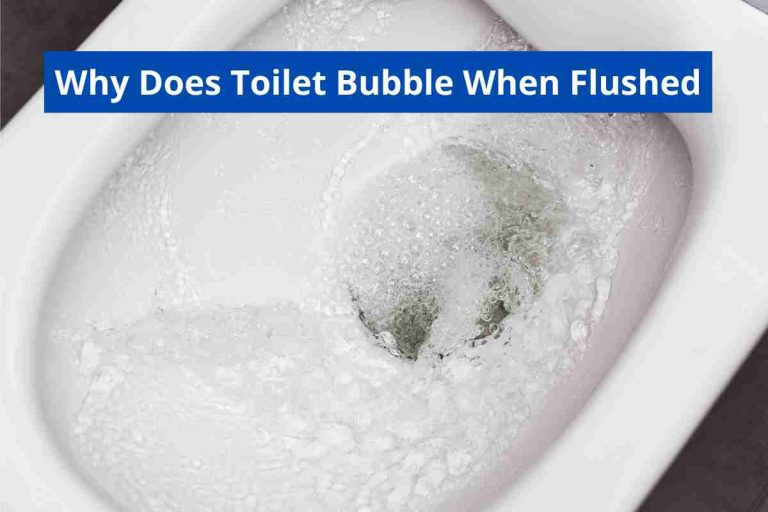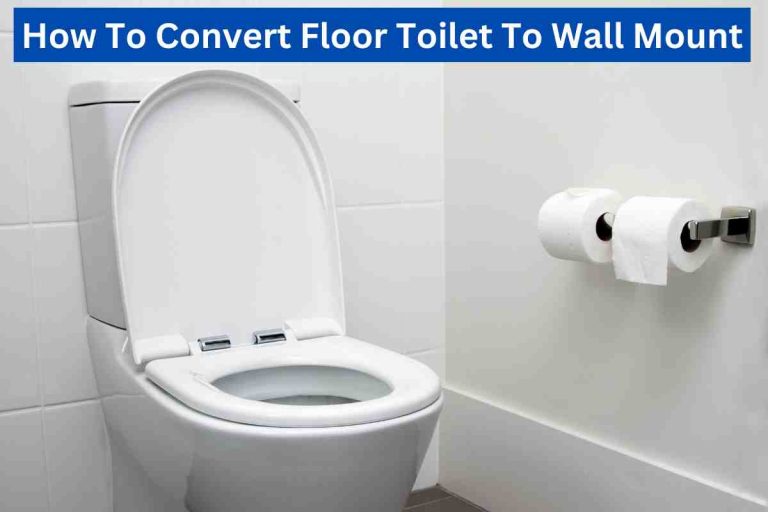Toilet Bowl Losing Water But No Leak(Loss Water Causes)2024

Have you ever experienced a toilet bowl losing water, but there’s no visible leak? It can be a frustrating problem, but it’s important to remember that it’s also serious.
A toilet bowl that’s losing water can lead to mold growth, rotting of the toilet bowl and floor, water damage to the walls and ceiling, and increased water bills. That’s why it’s important to identify and fix the problem as soon as possible. Let me share some tips on how to solve the toilet bowl losing water without leakage. Let’s read for further information;
Table of Contents
Toilet Bowl Losing Water But No Leak- Causes, Solutions, And Preventions
A toilet with no leaking but losing water problem is a headache, and you can’t survive with it. Therefore, you have to solve the issue immediately:
What are the causes and solutions of a toilet bowl losing water but no leak?
Here are some possible causes of a toilet bowl losing water but no leak.
Clogged flapper valve
The flapper valve is the rubber seal that covers the hole in the bottom of the toilet tank. If the flapper valve is not sealing properly, water can leak slowly from the tank into the bowl.
- Solution
You have to replace the clogged flapper valve. It is a relatively easy job; you can find replacement flapper valves at most hardware stores.
Technical precautions
- When replacing the flapper valve, get the right size for your toilet.
- Be careful not to over-tighten the screws that hold the flapper valve in place, as this can damage the valve.
- After replacing the flapper valve, test it by flushing the toilet and ensuring the tank fills up properly, and the water doesn’t leak into the bowl.
Worn fill valve
The fill valve is the valve that controls the water flow into the tank. If the fill valve is worn, it may not close completely, allowing water to flow into the tank and overflow into the bowl.
- Solution
To fix a worn fill valve, you must to replace it. You can find replacement fill valves at most hardware stores.
Technical precautions
- When replacing the fill valve, get the right size for your toilet.
- Be careful not to cross-thread the screws that hold the fill valve in place, as this can damage the valve.
- After replacing the fill valve, test it by flushing the toilet and ensuring the tank fills up properly, and the water doesn’t overflow into the bowl.
Cracked toilet tank
If the toilet tank is cracked, water can leak out and down the outside of the toilet. It can be difficult to spot, as the water may evaporate before reaching the floor.
- Solution
Replacing the cracked toilet rank is the only solution to this problem. This is a more involved job than replacing the flapper or fill valve, but it’s still something that most homeowners can do with a little DIY experience.
Technical precautions
- When replacing the toilet tank, get the right size and type of tank for your toilet.
- Refrain from overtightening the nuts and bolts that hold the tank in place, as this can damage the tank or the bowl.
- Once the new toilet tank is in place, test it by flushing it and ensuring no leaks.
Clogged vent pipe
The vent pipe allows air to circulate in the toilet plumbing system. If the vent pipe is clogged, it can create a vacuum to pull water out of the toilet bowl.
- Solution
You must clear the clog to fix a clogged vent pipe. You can clear it with a plunger, a drain snake, or by calling a plumber.
Technical precautions
- If you’re using a plunger to clear the clog, make sure to use a plunger with a large flange to cover the vent pipe’s opening.
- If you’re using a drain snake to clear the clog, be careful not to damage the vent pipe.
- Once the clog is cleared, test the vent pipe by flushing the toilet and ensuring no more water is disappearing from the bowl.
Faulty flush valve
The flush valve is the valve that controls the flow of water from the tank into the bowl. If the flush valve is faulty, it may not seal properly, allowing water to leak slowly out of the bowl.
- Solution
You must replace a faulty flush valve if you want to fix it. You can easily find replacement flush valves at most hardware stores.
Technical precautions
- When replacing the flush valve, get the right size for your toilet.
- Dont overtighten the screws that hold the flush valve in place, as this can damage the valve.
- Test it by flushing the toilet after installing a new flush valve and ensuring no leaks.
Why Does My Toilet Bowl Empty Itself?
A toilet bowl can empty itself due to a few technical reasons.
The most common reason is a clogged flapper valve. If the valve is not sealing properly, water can leak slowly from the tank into the bowl, eventually emptying it.
Another possible cause is a worn fill valve. If the fill valve is worn, it may not close completely. It allows the water to flow into the tank and overflow into the bowl, eventually emptying it.
In rare cases, a cracked toilet tank or a clogged vent pipe can also cause the toilet bowl to empty itself. A cracked tank allows water to leak out of the tank and down the outside of the toilet, while a clogged vent pipe can create a vacuum that can pull water out of the bowl.
- Why does the water level in the toilet bowl drop slowly?
A slow drop in toilet bowl water level can be due to a partial clog in the drain, a faulty flapper not sealing correctly, insufficient water in the tank caused by fill valve or float problems, or ventilation issues. These common problems can lead to inefficient flushing.
- Why does the toilet bowl lose water after flush?
Toilet bowl water loss after flushing typically indicates an issue with the flushing mechanism or the seal between the tank and the bowl. The primary reasons include a faulty flapper not sealing properly, a damaged or worn-out flush valve, or a cracked toilet bowl.
These problems can result in water gradually leaking from the bowl, leading to inefficiency and potential water wastage.
- Why my toilet bowl is empty, but the tank is full?
A toilet bowl being empty while the tank is full is due to a malfunction in the flushing mechanism. Potential causes include a malfunctioning flapper not allowing water to enter the bowl, clogged rim holes or jets impeding water flow, inadequate water level in the tank, or a cracked/damaged bowl.
- Why does the toilet bowl water level drop overnight?
If your toilet bowl water level drops overnight, it could be due to a slow leak in the tank. It occurs when water from the tank gradually seeps into the bowl through a faulty flapper or flush valve.
Different factors like mineral deposits or a misaligned flapper may cause this. To address it, inspect and replace any worn-out or misaligned components, ensuring a tight seal between the tank and bowl to prevent water loss.
{ "@context": "https://schema.org", "@type": "BlogPosting", "mainEntityOfPage": { "@type": "WebPage", "@id": "https://toiletsadviser.com/toilet-bowl-losing-water-but-no-leak/" }, "headline": "Toilet Bowl Losing Water But No Leak(Loss Water Causes)2024", "description": "Have you ever experienced a toilet bowl losing water, but there’s no visible leak? It can be a frustrating problem, but it’s important to remember that it’s also serious.", "image": "https://toiletsadviser.com/wp-content/uploads/2023/10/Toilet-Bowl-Losing-Water-But-No-Leak.jpg", "author": { "@type": "Person", "name": "Alex Miller", "url": "https://toiletsadviser.com/author/alex-miller/" }, "publisher": { "@type": "Organization", "name": "Alex Miller", "logo": { "@type": "ImageObject", "url": "https://toiletsadviser.com/wp-content/uploads/2022/03/cropped-android-chrome-512x512-4.png" } }, "datePublished": "2023-10-05", "dateModified": "2023-11-13" } { "@context": "https://schema.org/", "@type": "BreadcrumbList", "itemListElement": [{ "@type": "ListItem", "position": 1, "name": "Home", "item": "https://toiletsadviser.com/" },{ "@type": "ListItem", "position": 2, "name": "Blog", "item": "https://toiletsadviser.com/blog/" },{ "@type": "ListItem", "position": 3, "name": "Toilet Bowl Losing Water But No Leak", "item": "https://toiletsadviser.com/toilet-bowl-losing-water-but-no-leak/" }] } { "@context": "https://schema.org", "@type": "FAQPage", "mainEntity": [{ "@type": "Question", "name": "Why does the water level in the toilet bowl drop slowly?", "acceptedAnswer": { "@type": "Answer", "text": "A slow drop in toilet bowl water level can be due to a partial clog in the drain, a faulty flapper not sealing correctly, insufficient water in the tank caused by fill valve or float problems, or ventilation issues. These common problems can lead to inefficient flushing." } },{ "@type": "Question", "name": "Why does the toilet bowl lose water after flush?", "acceptedAnswer": { "@type": "Answer", "text": "Toilet bowl water loss after flushing typically indicates an issue with the flushing mechanism or the seal between the tank and the bowl. The primary reasons include a faulty flapper not sealing properly, a damaged or worn-out flush valve, or a cracked toilet bowl." } }] }
With an impressive 7-year track record as a professional toilet plumber, Helena Shaner brings a wealth of knowledge and experience to the world of toilet plumbing.
Throughout her career, Helena Shaner has become a go-to specialist for all things toilet-related, whether fixing a stubborn clog, performing maintenance to keep your toilet in top-notch condition, or guiding you to choose the perfect toilet for your home or commercial space.
Helena Shaner has dedicated her expertise to solving toilet woes in residential and commercial settings, and she’s seen it all. From minor annoyances like running toilets to more complex issues that require a plumber’s touch, Helena Shaner has tackled them with finesse and precision.
Now, as part of the team at toiletsadviser.com, Helena Shaner is excited to share his extensive knowledge and tips with you. Her mission is to make your life easier by offering valuable insights into toilet plumbing issues and reviewing the best toilets and brands available.
Regarding toilets, Helena Shaner is your trusted source for advice, guidance, and solutions. With her friendly and approachable style, she’ll break down complex plumbing topics into easy-to-understand insights. You can count on her to provide expert recommendations and help you make informed decisions about your toilets.
Stay tuned for her informative articles and reviews to help you keep your toilets in tip-top shape and find the perfect toilet.





